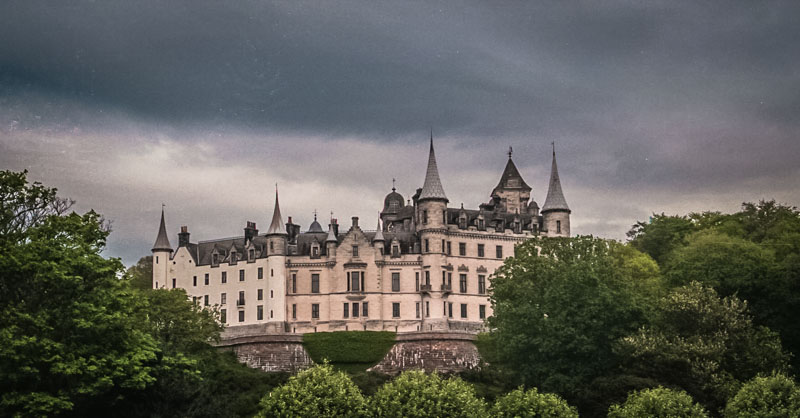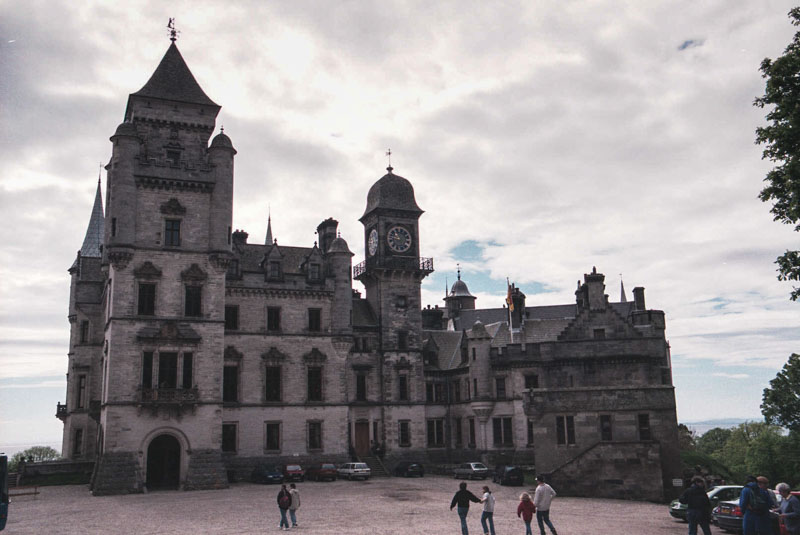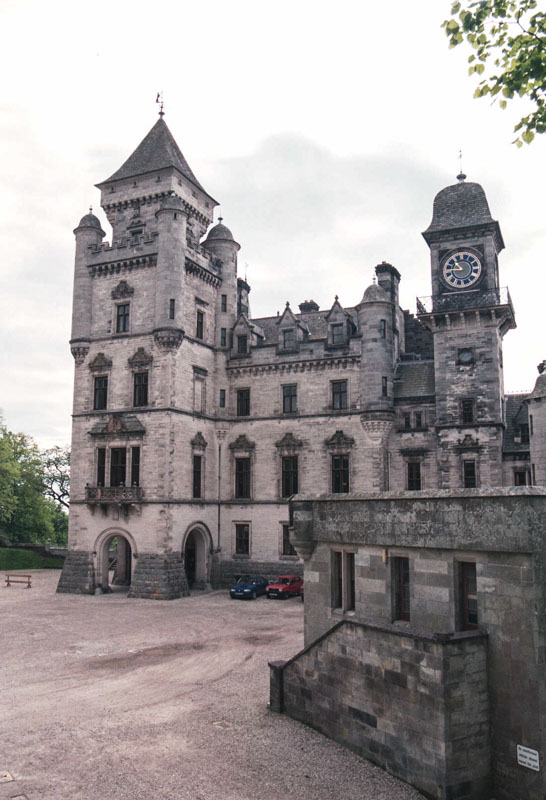
Dunrobin Castle is a strange conglomeration of styles that have evolved over many centuries of expansion and restoration. Originally, the lands in the 12th century belonged to the Freskins of Duffus. They became Earls of Sutherland in the 13th century. It passed by marriage to the Huntlys in 1514 and it was brought into an English family (Leveson Gowers) in the late 18th century.
The existing castle has grown up around a small tower house and has been occupied by the family ever since. The tower dates from 1520, but parts may go back to the time of William, 3rd Earl, in 1327. The round stair turret at one corner dates from John, the 13th earl, in 1594. Either John or his successor added a mansion with ranges within a small court Dunrobin was further expanded for the Countess Elizabeth in 1785 and in 1835 Sir Charles Barry was commissioned to build substantial facades onto the existing building, extending the complex to the north and east.

The first enlargement was carried out in the 18th century, at which time is was converted into a courtyard-plan castle. The castle was enlarged and remodeled between 1845-51. Dunrobin was damaged by fire in 1915, and it was repaired after WWI. Everything seen by visitors as they approach down the avenue is basically Sir Barry’s work from the 1830s, which has entirely hidden the original tower house behind the gray stone facade. Even the whitewashed walls of the 17th century mansion only come into view as you round the back of the castle and walk through the gardens. From below, Dunrobin looks like a French Chateau, a fairy-tale castle with conical turrets. All it needs is a few pennants.
Legend has it that the upper floors of the castle are haunted by the ghost of a daughter of the 14th Earl. She decided to elope with her lover, but her father considered the man unsuitable, and had her imprisoned in one of the attic rooms to prevent her from marrying the boy. She tried to escape out the window, but her father surprised her and she fell to her death. One of the rooms she haunts has since been abandoned.

